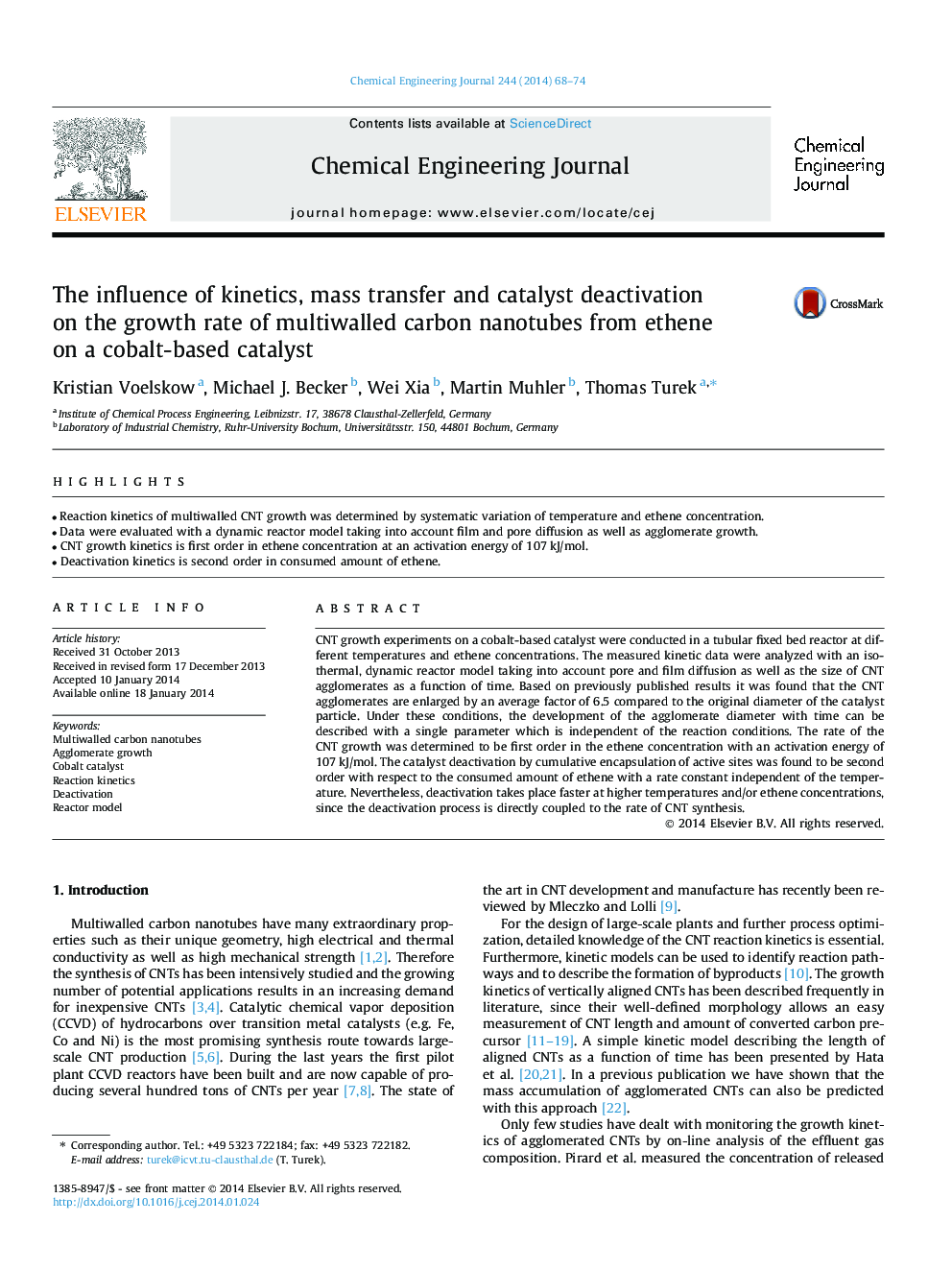| کد مقاله | کد نشریه | سال انتشار | مقاله انگلیسی | نسخه تمام متن |
|---|---|---|---|---|
| 147790 | 456399 | 2014 | 7 صفحه PDF | دانلود رایگان |
• Reaction kinetics of multiwalled CNT growth was determined by systematic variation of temperature and ethene concentration.
• Data were evaluated with a dynamic reactor model taking into account film and pore diffusion as well as agglomerate growth.
• CNT growth kinetics is first order in ethene concentration at an activation energy of 107 kJ/mol.
• Deactivation kinetics is second order in consumed amount of ethene.
CNT growth experiments on a cobalt-based catalyst were conducted in a tubular fixed bed reactor at different temperatures and ethene concentrations. The measured kinetic data were analyzed with an isothermal, dynamic reactor model taking into account pore and film diffusion as well as the size of CNT agglomerates as a function of time. Based on previously published results it was found that the CNT agglomerates are enlarged by an average factor of 6.5 compared to the original diameter of the catalyst particle. Under these conditions, the development of the agglomerate diameter with time can be described with a single parameter which is independent of the reaction conditions. The rate of the CNT growth was determined to be first order in the ethene concentration with an activation energy of 107 kJ/mol. The catalyst deactivation by cumulative encapsulation of active sites was found to be second order with respect to the consumed amount of ethene with a rate constant independent of the temperature. Nevertheless, deactivation takes place faster at higher temperatures and/or ethene concentrations, since the deactivation process is directly coupled to the rate of CNT synthesis.
Journal: Chemical Engineering Journal - Volume 244, 15 May 2014, Pages 68–74
